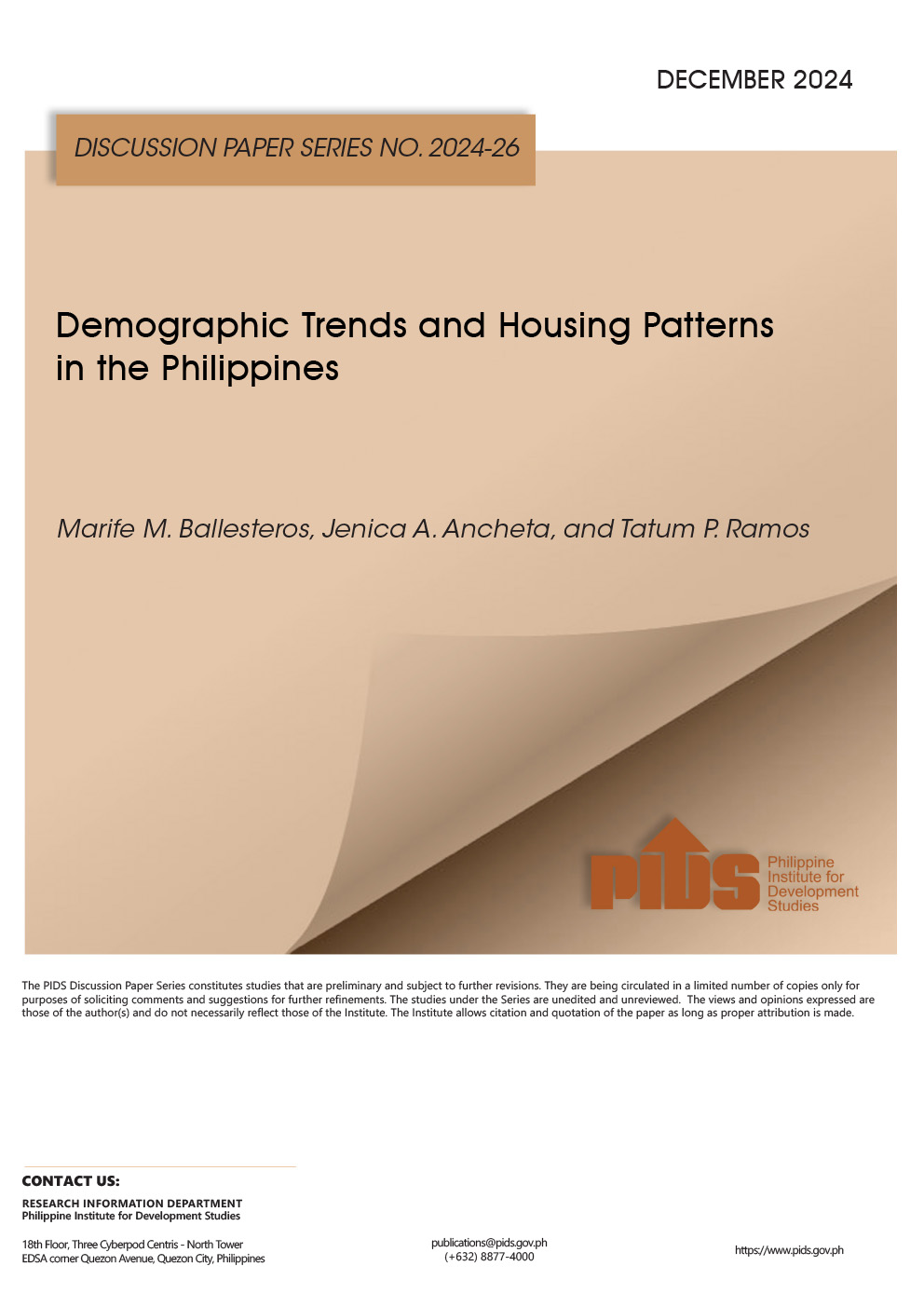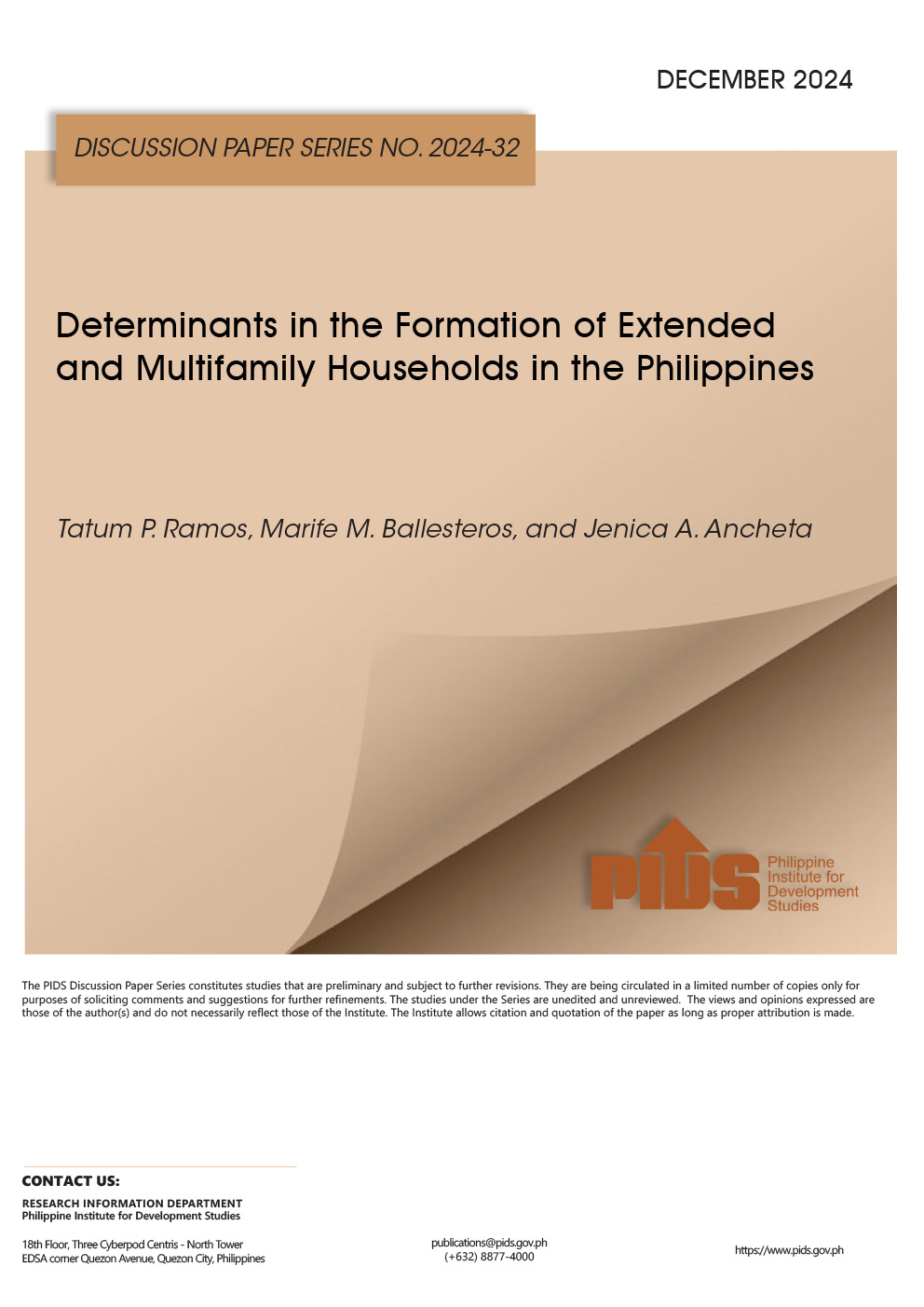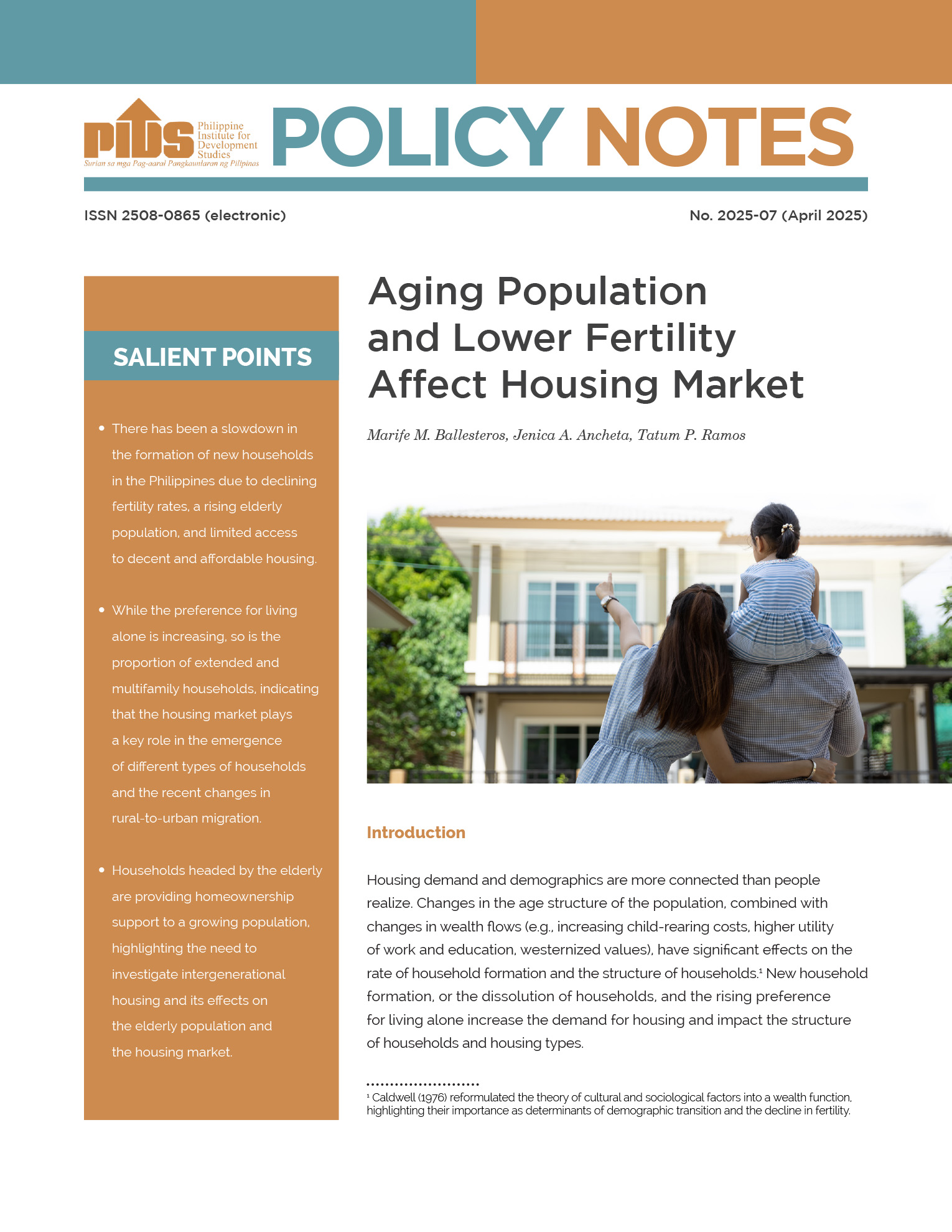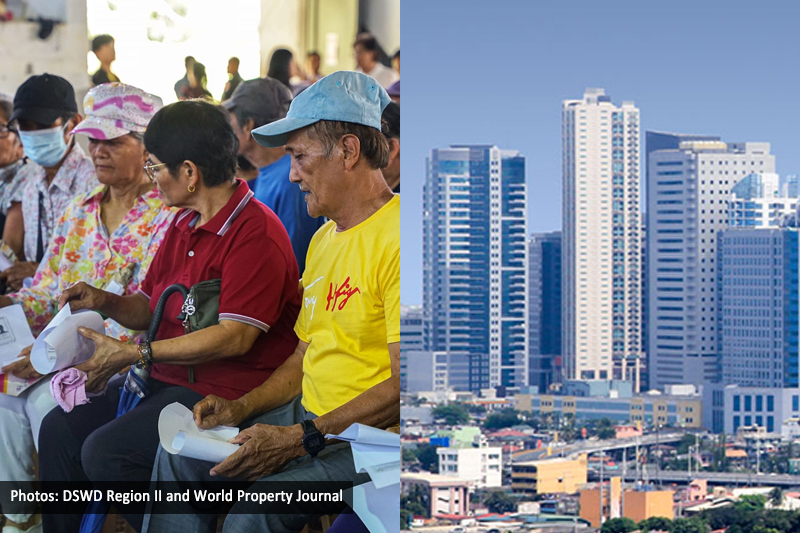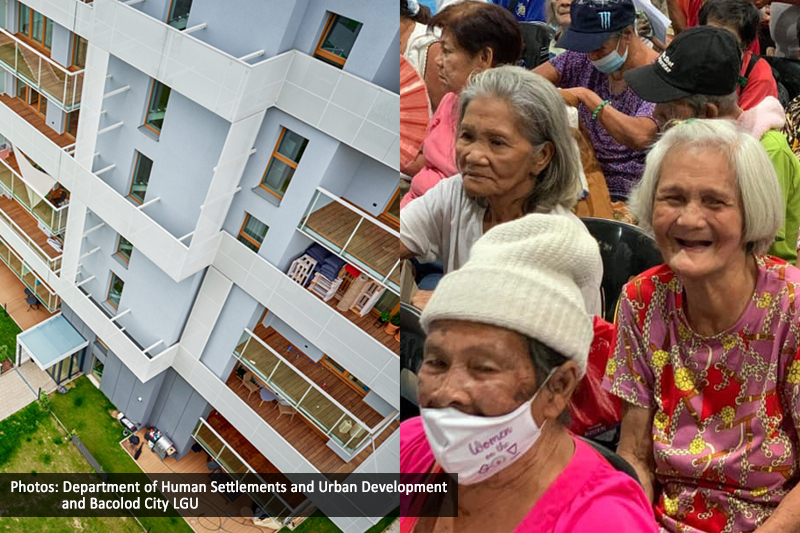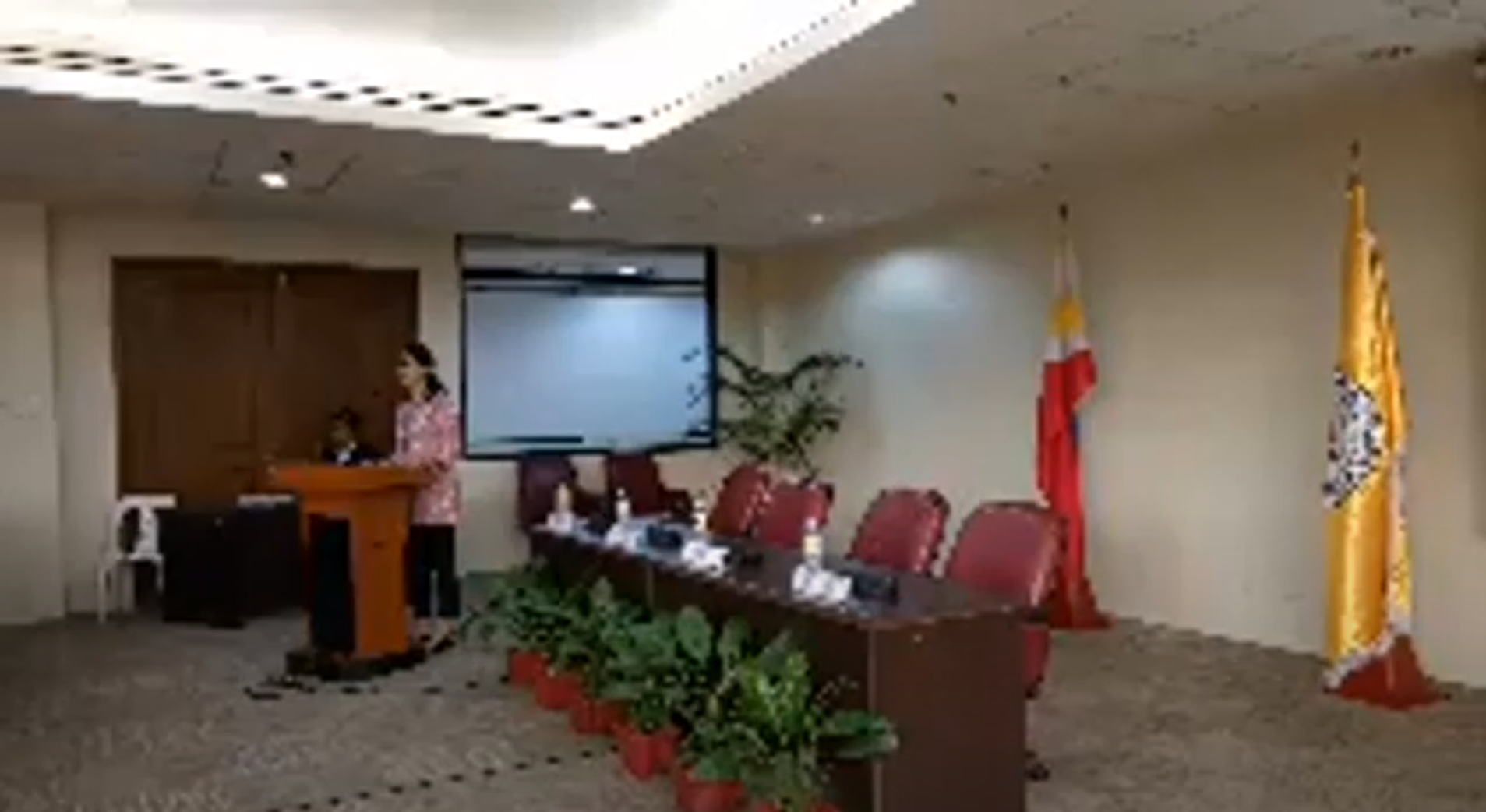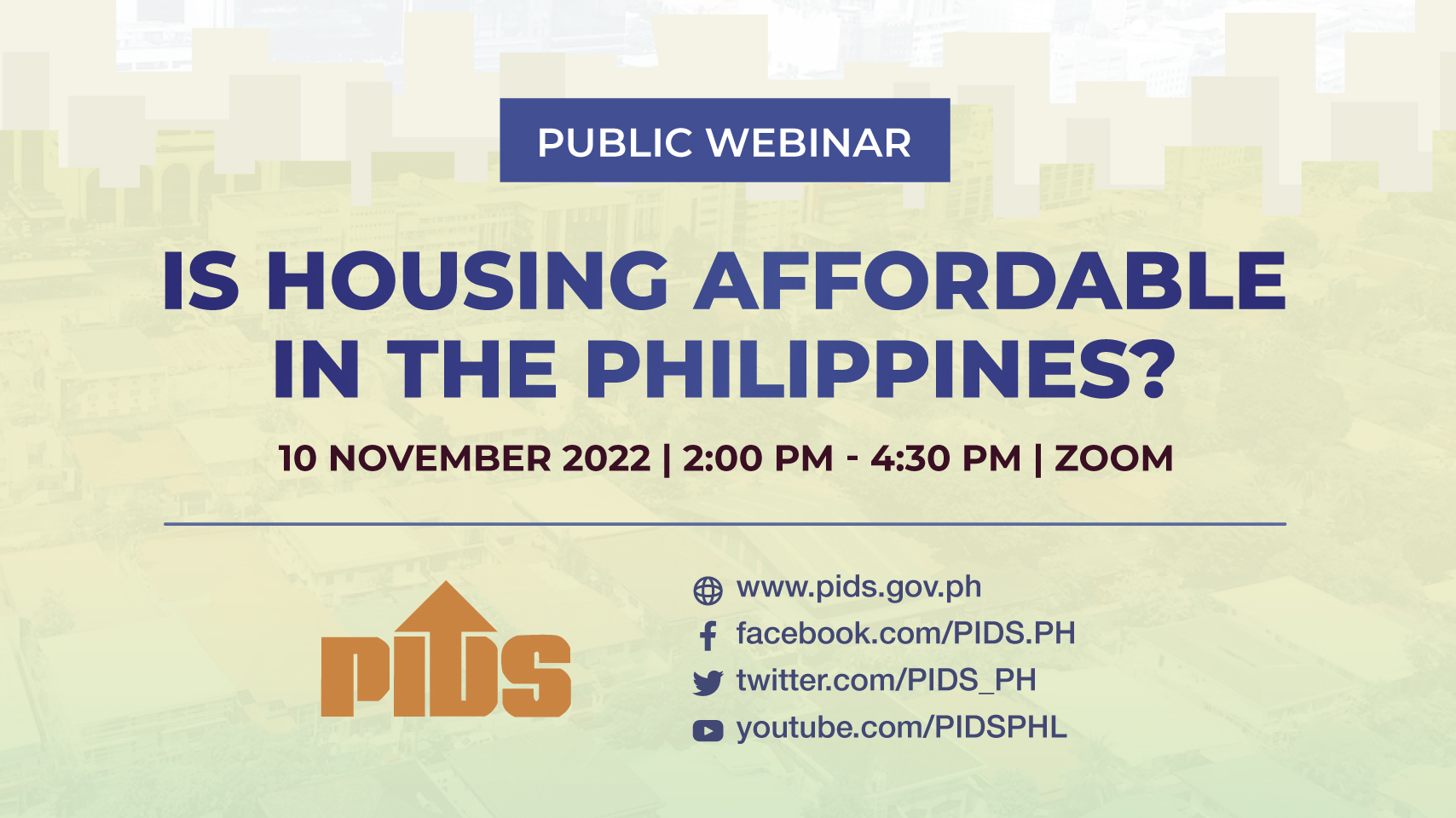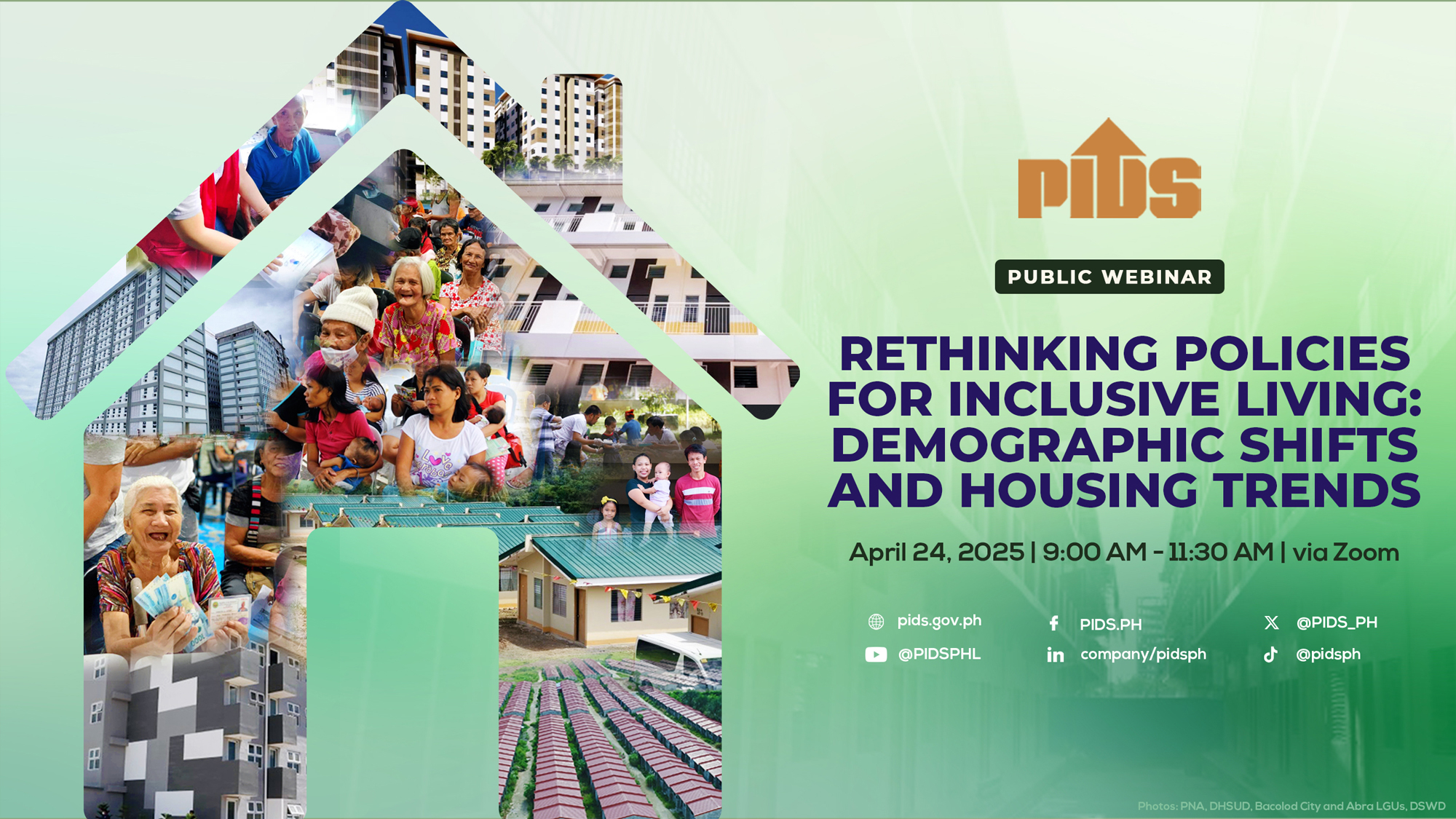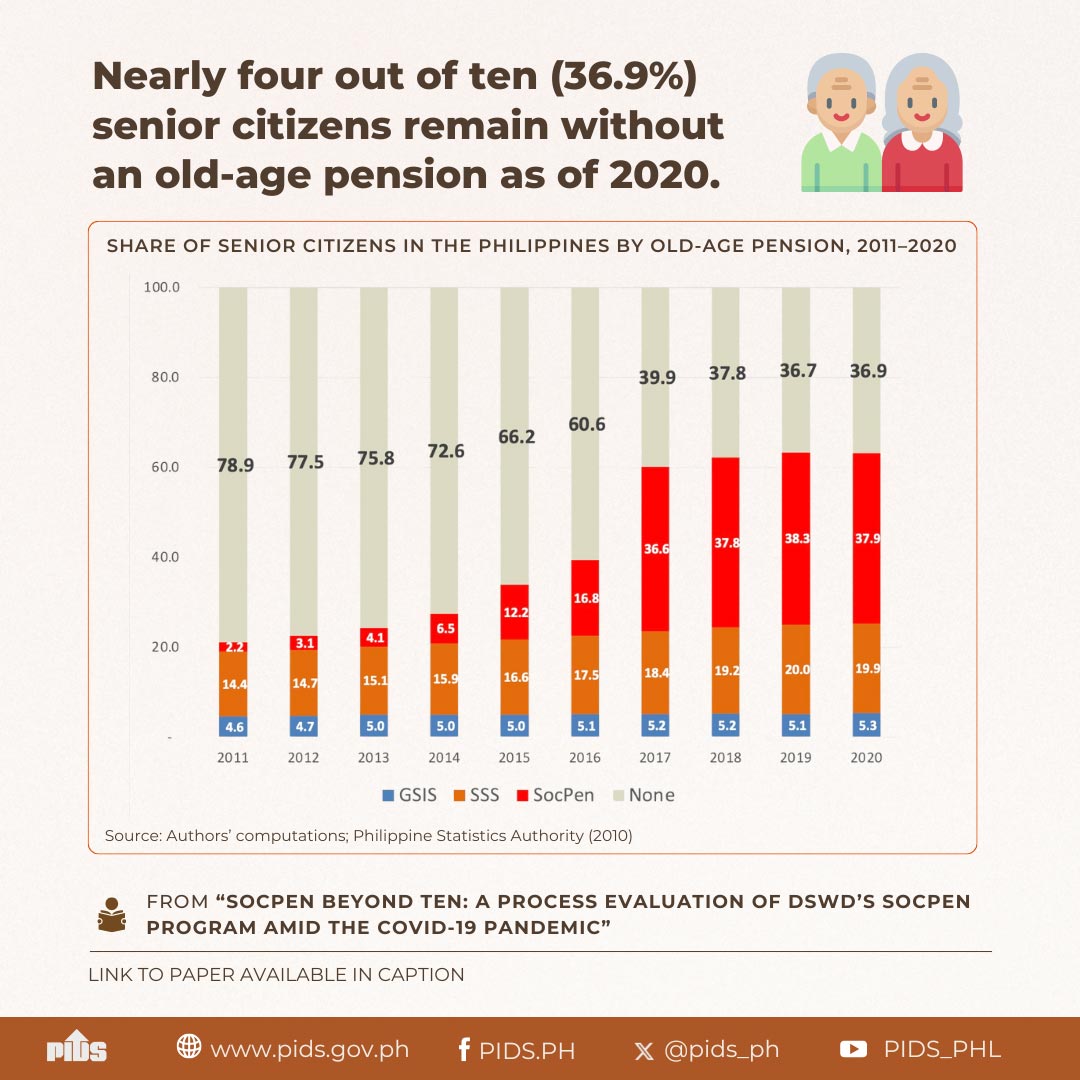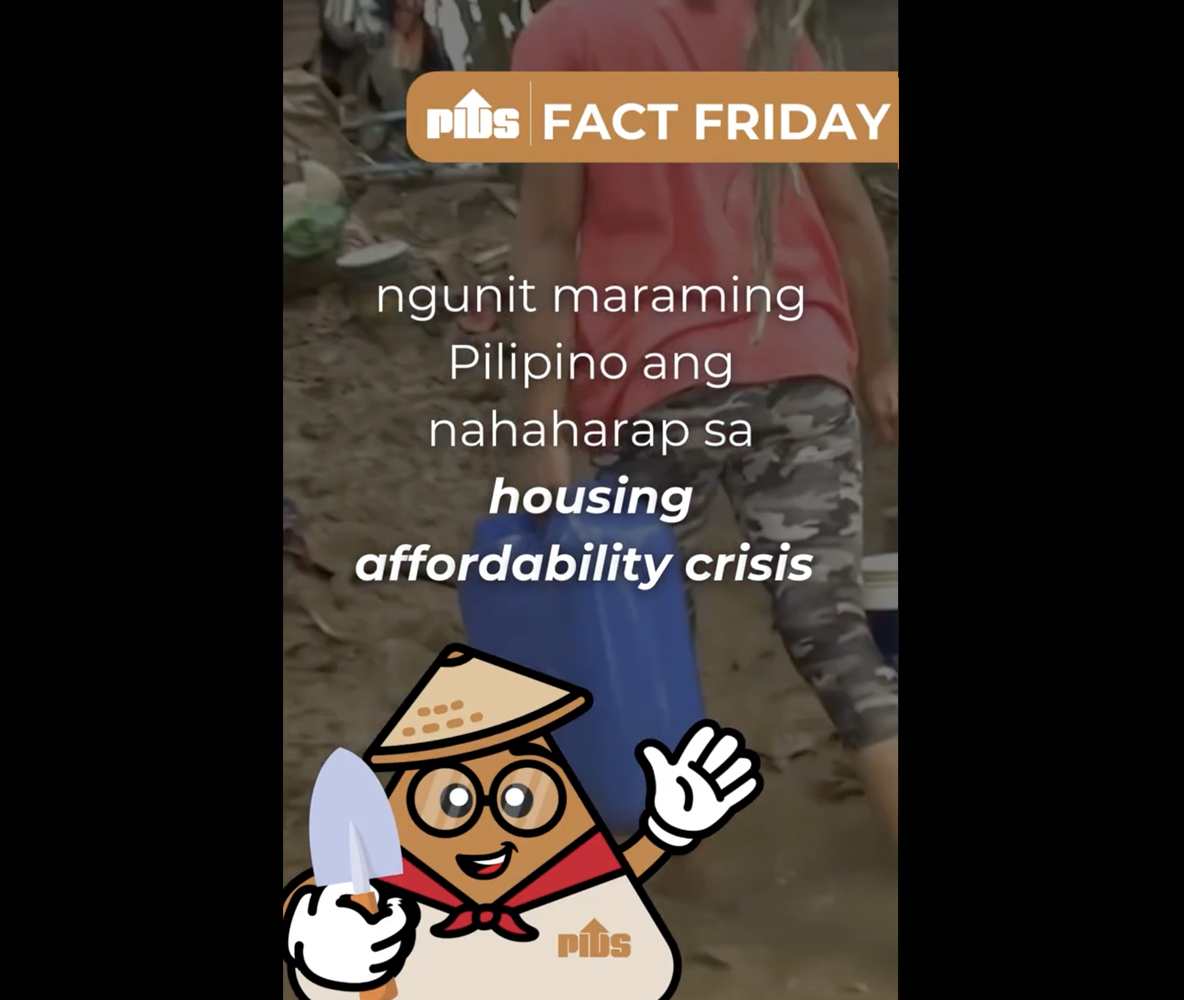MASS housing should be for all, but many Filipinos, particularly those belonging to lower-middle income families, still feel left out of the equation.
The family of Bituin Mendoza (not her real name) is an example. Her family has been a renter for over a decade. Her mother, a domestic helper in Hong Kong, has been saving up for a home since she started working abroad 13 years ago.
They are currently “renting” a home from her father’s friend who is currently an overseas Filipino worker (OFW) in Dubai. The friend has been behind in their mortgage payments and, as the caretakers of the home, Mendoza’s mother pays for the back payments and serves as their rent.
Her mother’s remittance helped pay around P150,000 worth of back payments (about $2,857.88 at current exchange rates). Around P100,000 more is needed before all the payments are covered. Amid all their bills and obligations in ensuring that they do not fall behind on their rent and utilities payments is the dream that someday they will come home to a house they own.
“Kaya hindi masyadong ginagalaw ni Mama ’yung kita nya para ’pag umuwi na siya permanently, ’yun na ’yung next project nila. Kailangan lang matapos yung utang sa bahay para makaalis din kami [This is the reason Mama is saving her money. When she comes home permanently, buying a house will be their (parents) next project. We just need to finish paying for the house so that we can finally leave],” Mendoza said.
As for Brix Villaroel, owning a home is on the horizon for him and his family. His family, composed of his mother and a younger sibling who is still in school, is currently renting a home in Vito Cruz, Manila. Initially, their rent started at P15,000 (around $285.79) a month and steadily increased to P18,000 monthly.
A couple of years back, Villaroel and his mother scouted for a place they could finally call their own. They found a P2-million condo in the area and entertained the thought of buying it by securing loans from the private sector and the government. But they found that it was quite small for the amount of investment they needed to make.
Another hurdle is Villaroel’s tenure: he’s been working less than three years for the company. This makes him ineligible for a loan from Home Development Mutual Fund (HDMF), more commonly known as Pag-Ibig Fund. This sets back his and his mother’s plan to within two or three years.
While owning a home is a good thing, for single mother Estrella Dimaculangan (not her real name), it is not the most practical.
She said renting a house is the most affordable option for her right now. Raising a child on her own after her partner passed away is not easy and the mounting bills associated with schooling and health care can take their toll on a meager salary.
Dimaculangan said she is currently living with her family in a house they have been renting for over 30 years in Singalong, Manila. Since her sister married the son of their landlady, they only pay a small rent, around P2,500 a month. Their simple home is just a studio-type house and she shares it with four other family members, including her child.
She said even if there was an option to secure a loan from Pag-Ibig, she did not entertain it because she thinks she would not be able to meet the payments given her salary and the cost of raising a child on her own.
Dimaculangan also recalled the experiences of a friend who defaulted on her Pag-Ibig payments for a house in Molino, Cavite. The friend even offered her the house but as she was averse to securing loans and the house was quite far from her work and family, she did not consider buying it.
“Sila Nanay may pwesto sa palengke pero hindi pang-malakasan kasi gulay lang ’yun, eh. Ako naman, single parent so ’yung perang hawak mo, kailangan mo talaga i-budget [Mother sells vegetables in the wet market but the profits are not that much. As for me, I’m a single parent so I had to budget every peso I have in my pocket],” Dimaculangan said.
Housing and income
MENDOZA, Villaroel and Dimaculangan are among the millions of middle-income household members who are renting nationwide. Based on a rental study conducted by the Philippine Statistical Research and Training Institute (PSRTI), middle-income families accounted for the bulk or 889,033 families of the 1.5 million who are renting homes nationwide in 2012.
Based on the PSRTI study, Mendoza would classify under the rental class of P10,000 to P14,999, while Villaroel would classify under the P15,000 and over, and Dimaculangan would belong to the P2,000 to P3,999 level.
The PSRTI said there were around 33,200 households in Mendoza’s level of rent while in the case of Villaroel, there were about 10,969 households. Dimaculangan belongs to the second-largest group with 467,693 households renting at the P2,000 to P3,999 level.
The study stated that the rental level of P1,000 to P1,999 a month included the most number of households at 497,807 families. Also noteworthy is that Dimaculangan belongs to the 122,034 families paying around P2,000 to P3,999 for rent and is a female-headed household.
Ateneo Center for Economic Research and Development (Acerd) Director Alvin P. Ang said middle-income households are especially sensitive to price. Such households are looking for investments that would allow them to maximize their hard-earned pesos.
He said this means they are looking for homes that are affordable and near their place of work. They also preferred worthwhile investments that can accommodate their families comfortably. The problem with these requirements is that these usually come at a price, a price that few middle-income households can afford.
“I think the lower middle-income class is finding it difficult to buy their own home and not the entire middle-income class. Clearly, the options presented by real-estate firms and Pag-Ibig aren’t attractive because current levels of disposable income won’t allow the lower middle-income class to allocate some amount for housing. If they allocate money for housing, they’ll surely sacrifice spending for necessities and consequently lower their current standard of living,” University of Asia and the Pacific School of Economics Dean Cid Terosa said.
Part of this difficulty, not only for the lower middle-income households in the Philippines, but also Filipinos of higher or lower incomes, is the fact that the growth of real wages has been flat.
Philippine Institute for Development Studies (PIDS) Vice President Marife M. Ballesteros said this makes the cost of homes the primary concern when buying housing units.
Ballesteros referred to the presentation made by the Housing and Urban Development Coordinating Council (HUDCC) on its flagship program, Balai Filipino Housing Program (Building Adequate Livable Affordable and Inclusive Filipino Communities). Balai, a Malay word for house, showed that the ceiling for socialized housing programs remains steep for millions of Filipino households.
In Memorandum Circular 2, series of 2018, issued last September 2018, then HUDCC Secretary General Falconi V. Millar said the ceiling for socialized housing is P700,000 for a 22-square-meter (sqm) property, while P750,000 is the ceiling for a 24-sqm property in Metro Manila or the National Capital Region and other areas.
These other areas included nearby areas where millions of workers in NCR currently reside, such as San Jose del Monte City in Bulacan; Cainta and Antipolo City in Rizal; San Pedro City in Laguna; and Carmona, Imus and Bacoor in Cavite.
The Balai Housing Program is the Duterte administration’s 10-year national housing program strategy to close the country’s shelter gap. The program aims to improve government efforts in addressing Filipinos’ housing needs, with the private sector playing a significant and pivotal role.
However, based on the 2015 Family Income and Expenditure Survey (FIES), the average income in the Philippines is P267,000 per household per year. The Philippine Statistics Authority (PSA) estimated that there were a total of 22.73 million households in 2015.
“In reality, it’s going to still be affordability that matters,” Ballesteros said. “Based on the HUDCC program, Balai, in their presentation, [showed] socialized housing was still expensive, around P750,000, without them thinking that people won’t be able to afford that because real wages are flat. So even if you try to explain to them, they seem not to understand.”
She added that, with real wages being flat, the chances of Filipinos getting a loan from a private bank would be slim. This is the same consideration when Filipinos resort to in-house financing in real-estate companies. This usually helps them secure their units but they still need to pay a certain amount of equity and would have to pay longer to own their units.
She said that even government institutions like Pag-Ibig will also not be as open to lending higher amounts to individuals who do not have the capacity to pay for certain housing units.
Due to these constraints, middle-income households will resort to renting units. The only problem is that you can rent for many years and pay amounts equivalent to paying for your own home without owning the house you are staying in.
“Even regular employees, I agree, have no choice but to rent,” Ballesteros said. “Our drivers here, even after several years, are still renting. And then they rent from informal rental facilities because that is within their budget.”
Housing for the poor
BUILDING a house for every Filipino family is the Philippines’s “One Dream.” Many politicians have attempted to reach this dream call and several of them could be considered successful.
These include the housing program in Quezon City dubbed “Bistekville,” which has been undertaken by the local government unit (LGU) with Phinma Property Holdings Corp. since 2011. This was the city’s response to the housing needs of more than 200,000 families living in areas considered danger zones, 80 percent of which were informal settlers, according to nongovernment organization Habitat for Humanity.
Bistekville housing units can be availed of by Quezon City residents who are considered informal settler families, or ISFs. These families are those living along rivers, creeks and esteros, those under transmission lines, those affected by infrastructure projects and those evicted through court order. They must also be able to pay monthly amortizations and should be members of Pag-Ibig Fund.
As payment, the LGU allows flexibility to future home owners. For example, a P400,000 unit can be paid from one year to 30 years. Those choosing to pay for their units for three decades would need to pay P2,645.30 per month, while those who intend to pay for the unit for one year would need to pay P34,673.67 a month.
Other LGUs, such as Pasig City, also have a housing program that involves the construction of medium-rise buildings in various in-city relocation sites, such as Amang Rodriguez Avenue, Manggahan, and Barangay Santa Lucia, among others.
Ballesteros added the Pasig City LGU is also accredited by other cities in terms of relocating informal settlers. She said Pasig City provides full support to these families who are relocated to other cities and municipalities. A memorandum of agreement with these cities and municipalities makes the move painless for ISFs in Pasig.
“The receiving LGUs would often complain ‘you’re putting all your squatters here in our areas,’ but Pasig is different,” Ballesteros said. “They welcome Pasig ISFs because they receive full support, meaning complete resettlement sites.”
The primary issue here is the capability of LGUs to provide the needs of ISFs for in-city relocation or resettlement in other areas. This required LGUs like Pasig and Quezon City to adjust their finances to be able to raise funds for socialized housing and to resettle ISFs.
In the case of Pasig, Ballestros said, it included in its revenue code that socialized housing funds will come from 1 percent of the assessed value of houses worth P1.5 million. This is coupled by efforts to charge idle land taxes. In the case of Quezon City, the recent increase in real-estate taxes went to socialized housing efforts.
Targets, headwinds
THESE efforts work toward helping the country meet its housing targets under the Philippine Development Plan (PDP). Under its Chapter 12, targets focused on providing access to affordable, adequate, safe and secure shelter in well-planned communities in the hope of addressing income inequality and meeting its goal called “AmBisyon 2040.” Ambisyon 2040 wants to meet the ambition that Filipinos own a single detached home by 2040.
The government also intends to decrease the proportion of urban population living in informal settlements from 7.53 percent in 2016 to 5.53 percent by 2022.
The government also aims to improve the proportion of socialized housing targets met to housing needs; improve the proportion of low-cost housing targets met to housing needs; and deliver socialized and low-cost housing units.
The PDP aims to increase the proportion of socialized housing by 16.53 percent and low-cost housing, 5.5 percent by 2022 from the 2016 baselines of 8.6 percent and 5.27 percent, respectively.
In terms of delivering socialized housing units, the PDP aims to increase delivered socialized housing to 1.086 million by 2022 from 82,612 in 2016. For low-cost housing, the target is 361,398 units by 2022 from 50,626 in 2016.
The National Economic and Development Authority (Neda) said these targets may be hampered by suitable land for socialized and low-cost housing and the availability of basic services/utilities (i.e., water and power supply) are provided on time.
Further, the Neda said adequate budget for housing may also fall short and issues in land titling, land conversion and compliance to land development/housing construction documentary requirements resolved.
Apart from these reservations, Ballesteros said the targets may not have robust baselines considering that there are data considerations when it comes to determining how many ISFs there are and how many people are looking for their own homes.
Getting the numbers right, Ballesteros said, is the common factor of Asian countries, such as Singapore, that have implemented successful housing programs. Determining how many people need homes and where to find them were basic considerations, she added.
“Actually you don’t have any information, even if you search anywhere: what is the population of the informal settlers? The numbers are different,” Ballesteros said.
“The only thing you have is the CPH [Census of Population and Housing], but it’s significantly lower than the estimates of LGUs because they, too, conduct a census. The only problem is that they are not able to properly monitor, and usually their survey is done only for a single year, after that, we don’t know,” she explained.
Affordability options
HOWEVER, there are also those who believe the affordability of housing units only becomes a problem when it comes to low-income and poor households. PIDS Senior Research Fellow Jose Ramon G. Albert said middle-income Filipinos in general do not have problems accessing housing options.
Albert said these families just need to determine the best option for them financially. However, Albert also noted the absence of “hard data” to support claims that middle-income households are indeed having a difficult time purchasing homes.
In fact, there is evidence to the contrary.
Private-sector economist Calixto Chikiamco said real-estate firms always say they are enjoying brisk sales. Albert added that, however, many of those buying homes were Chinese nationals and/or Chinese companies.
“I’m not aware of that [middle-income households finding it difficult to buy homes] as a fact. We wouldn’t have a housing boom if the middle class wasn’t buying,” Chikiamco said, pointing to a property developer and adding its condominium units are “always sold out and their buyers are middle class.”
On top of these concerns is the fact the Philippines has yet to pass the National Land Use Act (NLUA). The bill, which has been languishing in Congress for over 20 years, promises to protect prime agricultural lands, to provide rationalized land-use planning in the country, to consolidate national laws on land uses, and to address long-standing land-use conflicts.
In 2016, in a report to the United Nations, the HUDCC said passing an effective land-use policy was crucial in meeting the challenges of rapid urbanization.
Today and tomorrow
EFFORTS that have been recently put in place by the government to meet the country’s long-standing housing needs include the introduction of the Balanced Housing in 2016 that took effect in 2017 to 2018. There was also the Manila Bay Mandamus, which was passed in 2011 and is now being implemented.
There’s also Republic Act 10884, or the Balanced Housing Development Program Act, which sought to amend the Urban Development and Housing Act of 1992. The law sought to make housing more affordable for Filipinos and encourage more participation of the private sector in socialized housing.
The law created one-stop shops nationwide for the processing, approval and issuance of clearances, permits and licenses to reduce the number of days in processing housing development down to 90 days.
The law requires owners and/or developers of proposed subdivision and condominium projects to develop an area for socialized housing equivalent to at least 15 percent of the total subdivision area or total subdivision project cost and at least 5 percent of the condominium area or project cost, “at the option of the developer, in accordance with the standards as provided by law.”
Apart from this, recent efforts stated in the Manila Bay Mandamus have also started implementation. The mandamus ordered the Metropolitan Manila Development Authority (MMDA) to remove informal settlers near rivers that snake along the Pasig-Marikina-San Juan route and the Parañaque-Zapote-Las Piñas areas. Removal of ISFs along the Navotas-Malabon-Tullahan-Tenejeros River is also expected. The mandamus sought to demolish all these structures to help clean up the rivers and eventually Manila Bay.
Ballesteros said the mandamus is forcing LGUs to take a look at their waterways and comply with the government’s policy to relocate informal settlers. This is also paving the way for LGUs to create housing and resettlement programs, she said.
DHUD deeds
ASIDE from these, the creation of the Department of Housing and Urban Development (DHUD) is a piece of legislation that is well-supported by the current administration. Economic managers have endorsed the creation of the DHUD to “finally put an end to Filipinos’ housing woes.”
The bill has already been transmitted to the President by the Senate and is awaiting the President’s signature, according to the Chairman of the Senate Committee on Housing and Urban Planning, JV Ejercito.
Ballesteros pointed out that the mindset of the National Housing Authority (NHA), particularly on the delivery of housing units, has to change. She said the NHA considers “turnover” as the completion of a housing unit and not the actual turnover of a unit to an ISF or any other household.
She said this could be the reason why many government housing projects were left unoccupied. Such was the state of the housing units in Bulacan that were claimed by Kadamay members in 2017.
During a visit, Vice President and former HUDCC Chairperson Maria Leonor G. Robredo found the units in a sorry state: cracks on concrete walls and floors, rusted doorknobs, and warped front doors.
“[For the NHA,] delivered means [there are] physical targets; they were able to build. Whether or not these houses will be occupied, they are considered delivered,” Ballesteros said. “But now, the DBM [Department of Budget and Management] is actively requesting that there will be residents for the NHA projects. This was included in their measures of quality.”
“It [should] respond to a need. Otherwise, if nobody will occupy the unit, you are not responding to a need. When you say ‘need’ in housing, there are a lot of aspects. You’re not just dealing with one type of commodity; one characteristic of a commodity,” she added.
Mixed-use tack
BALLESTEROS said the government should also look at mixed-use developments along major infrastructure projects as opportunities to create socialized housing projects. These include the Northrail and Southrail projects that are expected to address the housing needs of millions of Filipinos without endangering their sources of livelihood.
She said the NHA needs to step up in this regard since the bulk of the government’s housing budget is allocated for the agency. Ballesteros added that even the Department of Public Works and Highways should also work with the NHA not only in terms of relocating residents when they expropriate right of way for projects but also find ways to incorporate housing in its projects.
“We still have a lot of areas for expansion. For instance you have this North and Southrail, they should already think about what can be done there. Imagine that development will run from Bicol to Manila, that’s a big size of land so government should plan. Part of that area should be for socialized housing,” Ballesteros said. “Until we do that, it will be the same chicken-and-egg situation. And NHA doesn’t listen.”
The BusinessMirror’s request to interview the NHA and the HUDCC remained unacted on as of press time.
Building houses for all Filipinos is not a one-man job. Ballesteros believes it’s time to move forward with participatory efforts that encourage the building not only of houses but also of communities.
The Filipino middle class, even the low income and poor, deserve to own a home. It is part of their “AmBisyon 2040” and it is their hope that this dream of owning a piece of the land of their birth will cease to be a dream but become their reality.

